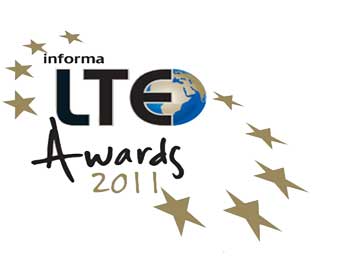The LTE Award for Best Contribution to LTE Standards is the only honour in the LTE World Summit Awards that is awarded to an individual. It recognises vital contribution at the most fundamental level of the technology and this year three veterans of the industry are competing for this prestigious accolade.
May 5, 2011

For any global communications technology to have a chance of succeeding, standardisation is crucial. For it to propagate, grow and scale, the quicker and the more robust those standards are established the better.
LTE is a technology that has the potential to unite the world’s mobile communications industry into a single global standard, which will simplify roaming for end users, drive higher economies of scale and create opportunities for the whole industry. As such, the individuals that have contributed to creating this important standard deserve recognition.
The LTE Award for Best Contribution to LTE Standards was conceived to deliver that recognition and is the only honour in the 2011 LTE Awards that is bestowed upon an individual rather than an organisation. It recognises vital contributions at the most fundamental level of the technology and this year three veterans of the industry have been nominated.
Deb Barclay, Distinguished Member of the Technical Staff, Alcatel-Lucent
Deb Barclay has over 30 years of experience in the industry, 25 of which were at Bell Labs/Lucent Technologies. Over the past five years, she has been working on contributions to 3GPP standards.
Specifically Barclay worked on the standardisation of IMS emergency call support for LTE bearer services, and was appointed as rapporteur of this work on the 3GPP core network architecture working group SA WG2. As rapporteur Barclay coordinated and drove the activities of the SA WG2 working group and was the leading technical contributor to a documented study and the resulting TS 23.401specifications.
In many countries local regulations stipulate that emergency calls must be supported regardless of the caller’s subscription status. The work carried out by Barclay’s team means that operators are able to set the authentication and authorization mode to meet local regulations. As part of the standard, the operator can vary the access modes so that either only those authorized for LTE services can access emergency services or that any UICC/SIM card can access the service regardless of authorisation level. The work also ensures that emergency calls can receive the highest quality of service regardless of the QoS levels paid for by the subscriber, and for the emergency service call to be handed over to networks to which the caller might otherwise have no access.
Without the work of Barclay’s team, says Alcatel Lucent, LTE would not have been compliant with local regulation mandates, which would have prevented it from being deployed as a voice solution.
Sun Lixin, Huawei Technologies
Sun Lixin joined Huawei in 2000, with 18 years of experience of working in mobile wireless standards. He has chaired the ITU-R WP 5D working group since 2003. Sun led the Huawei standards team in a technical analysis of the LTE standard that was used by 3GPP itself, Huaewi says, which contributed to the development of Release 10 of the LTE standard. The highlight of Sun’s team’s output was the work on cell-edge spectrum efficiency and latency, and the results of this were used by the ITU-R to showcase LTE’s technological superiority over competing standards.
In addition to his technical achievements, Sun works closely with global and regional industry players, including regulators, with the aim of securing more spectrum for LTE.
At the World Radiocommunication Conference in 2007 he acted as chairperson of Ad Hoc 2300-2400 and created a global group championing IMT based mobile networks. He is also acting chair of the APT Wireless Group, guiding digital convergence in the Asia-Pacific Region.
In total, and under Sun’s guidance, Huawei submitted 1,467 contributions to the 3GPP LTE standard in 2010, 314 of which were approved. As such, Huawei says, it has the number one ranking in 3GPP contributions, and number two in approved contributions. He is also rapporteur of the UL MIMO working group. Sun is also engaged in work on the LTE-Advanced standard.
Patrice Beaudou, Gemalto
Patrice Beaudou began his work in mobile standardisation in 1996, as part of the ETSI/SMG9 group and since then has worked in several 3GPP groups. He has also been part of ETSI-SCP and OMA groups.
As leader of the Telecom Standard teams at Gemalto, Beaudou has been instrumental in promoting, enriching and extending the usage of the USIM and ISIM models within LTE. As a result, the general security of LTE, in terms of performance, flexibility and coverage will be greatly improved compared to GSM and UMTS networks, Gemalto says.
Much of Beaudou’s work has been involved with the Relay Node—a new network element designed for LTE-Advanced. Gemalto’s work, supervised by Beaudou, consisted of defining how the Relay Node could be secured and was accepted by the 3GPP security group.
Beaudou has also been a major contributor to the Home e-NodeB (HeNB) specifications, otherwise known as Femtocell, which are expected to play a key role in LTE deployments. Gemalto’s standardisation work will enable greater security at lower costs for HeNB deployments in LTE networks.
Under Beaudou’s guidance, Gemalto also introduced the UICC-based management of Closed Subscriber Groups (CSG). This will enable applications around the discovery of surrounding CSG cells and CSG list display, and will also help extend the battery life of LTE handsets.
Finally, Beaudou was the initiator of the Gemalto’s Smart Card Web Server (SCWS) technology. Endorsed by 3GPP, this will enable a new Over The Air (OTA) channel, as well as a complete framework to remotely administrate the UICC and card applications over HTTPS protocols, making it perfectly suited to the all-IP environment provided by LTE.
The LTE Awards ceremony will take place on May 17th at Amsterdam’s RAI, after Day One of the LTE World Summit.
Read more about:
DiscussionAbout the Author(s)
You May Also Like








.png?width=300&auto=webp&quality=80&disable=upscale)


_1.jpg?width=300&auto=webp&quality=80&disable=upscale)


.png?width=800&auto=webp&quality=80&disable=upscale)